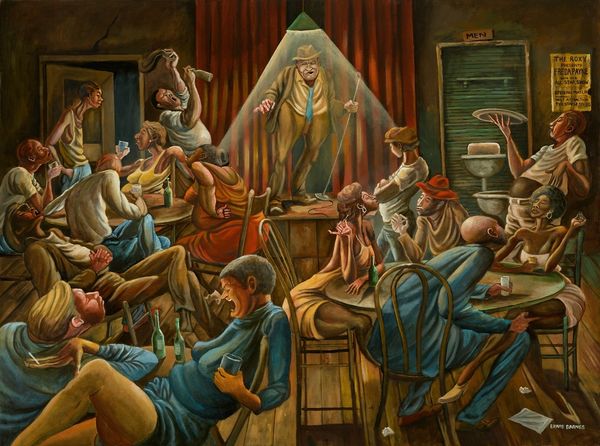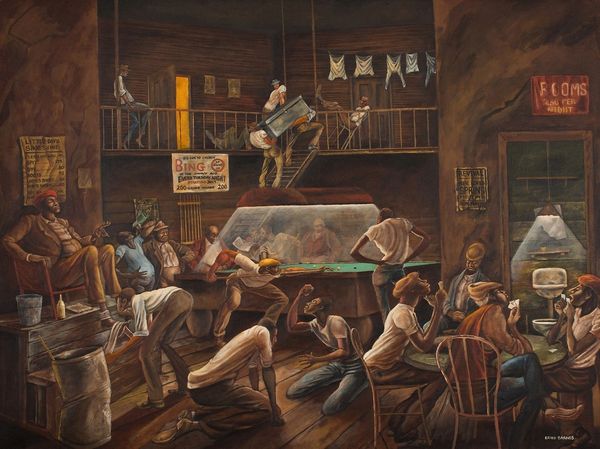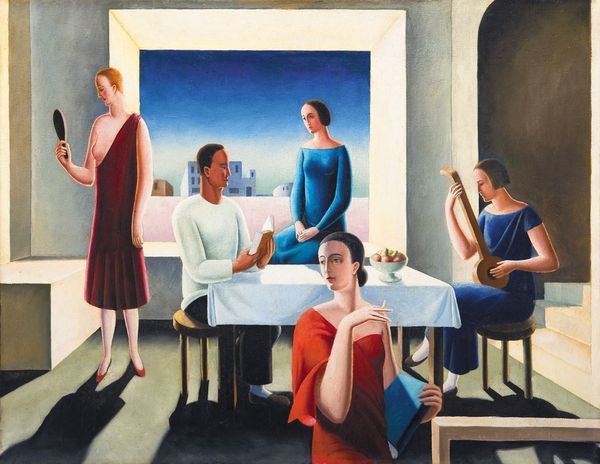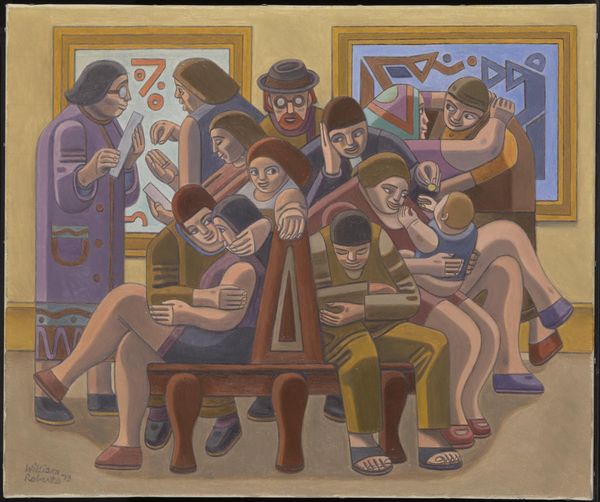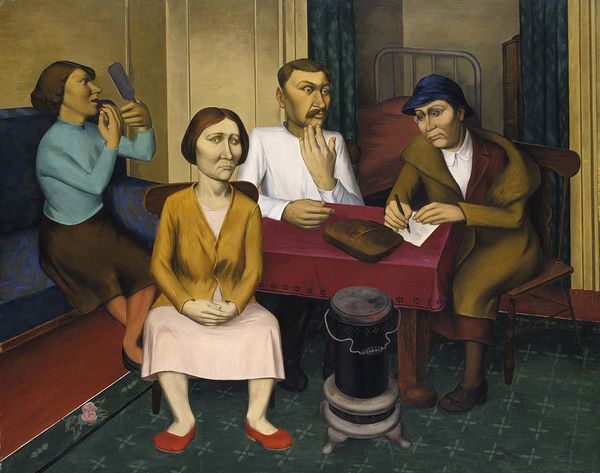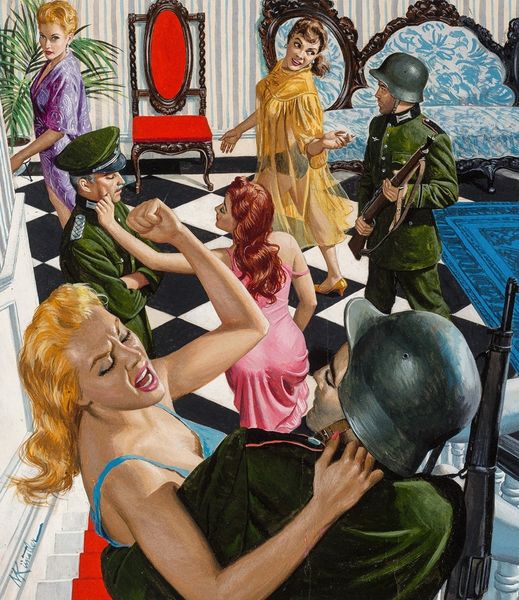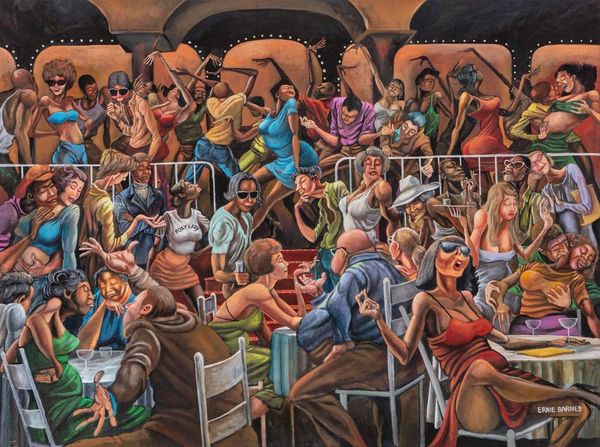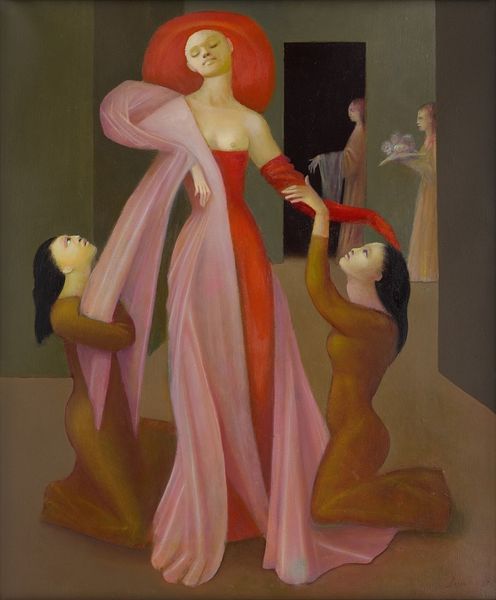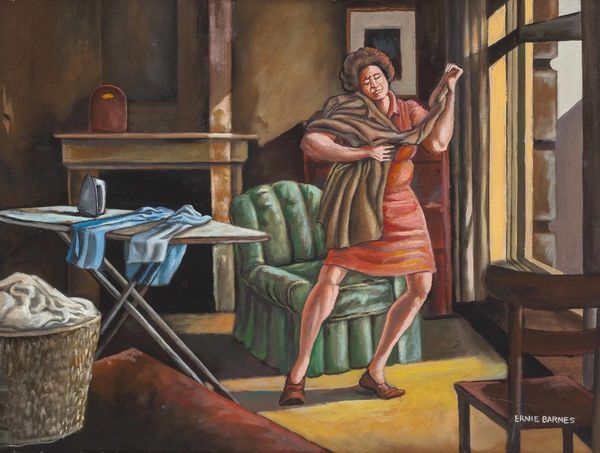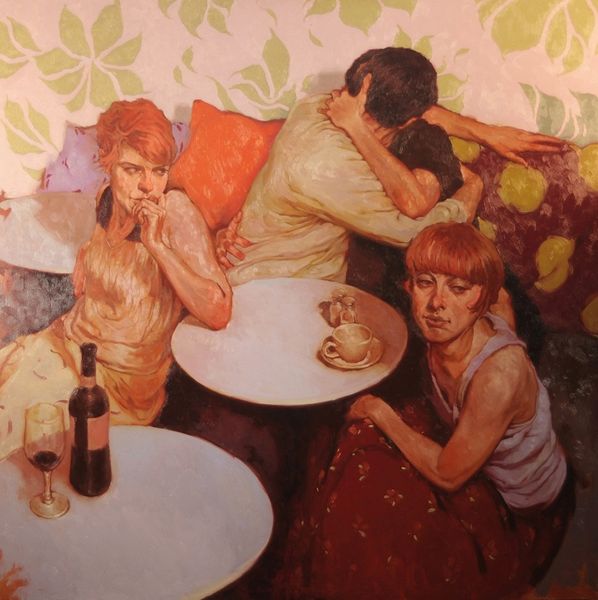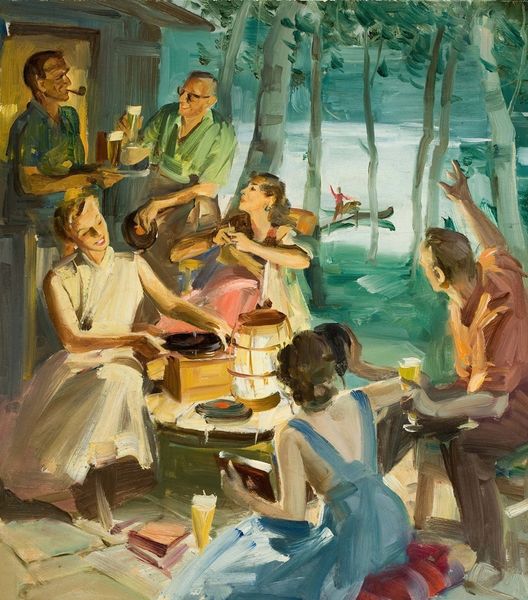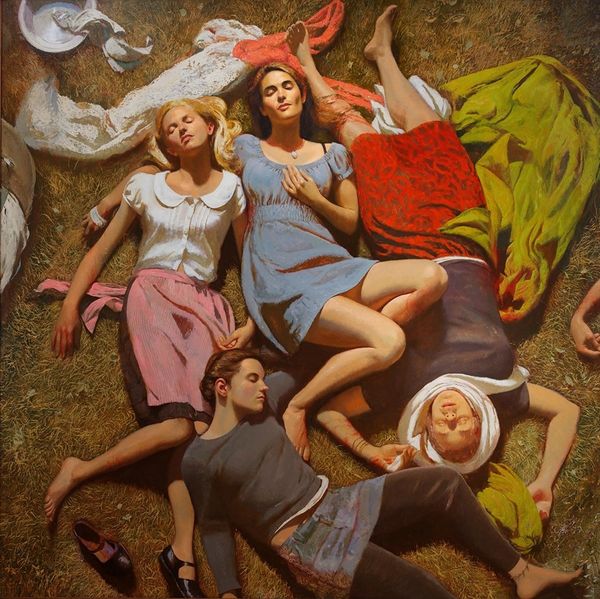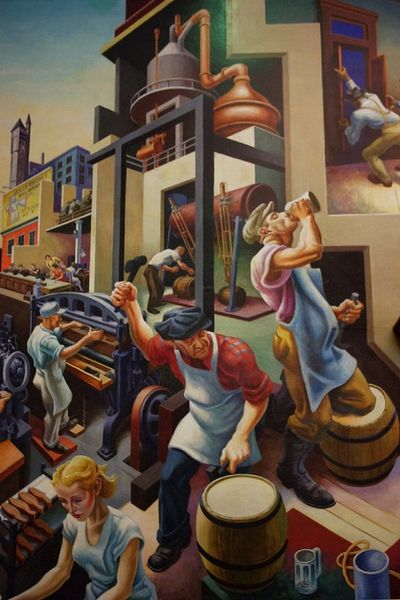
painting, oil-paint
#
portrait
#
narrative-art
#
painting
#
oil-paint
#
figuration
#
genre-painting
#
academic-art
#
modernism
#
regionalism
#
realism
Copyright: Thomas Hart Benton,Fair Use
Editor: So, this is Thomas Hart Benton's "Poker Night (from a Streetcar Named Desire)" from 1946, done with oil paint. There's a tension in the painting, a real push and pull between the figures. What do you see in this piece? Curator: The immediate pull is to the figures themselves, archetypes really. The players, hunched and absorbed, reek of raw masculinity, set against Blanche's overt femininity and fragile composure. She's checking her reflection, but what's being reflected? Editor: What do you mean by 'reflected'? Curator: Consider the mirror, not just as a looking glass, but a symbol of self-awareness or, conversely, denial. Blanche is constantly trying to create an illusion, and that’s her struggle, isn't it? To maintain appearances in a world that’s rapidly changing, becoming harsher. Note how her positioning also obscures the view of the sleeping man in the bed. Are these her hopes for security, or her fears being literally brought to life in front of the other players? Editor: That makes me think about the poker game as a symbol too – risk, chance, maybe even male dominance in that time. Curator: Exactly! The stakes are high, not just in the game but in the relationships depicted. Benton uses this space to distill deep, unsettling truths about post-war American society, class, and gender. Editor: I'm starting to see how all these visual clues build this unspoken story, layering meaning onto the surface. Curator: Visual language echoing psychological realities. The beauty and terror of it all lies in how these symbols still resonate. Editor: It gives you a lot to think about. Thanks for untangling the symbols for me!
Comments
No comments
Be the first to comment and join the conversation on the ultimate creative platform.
